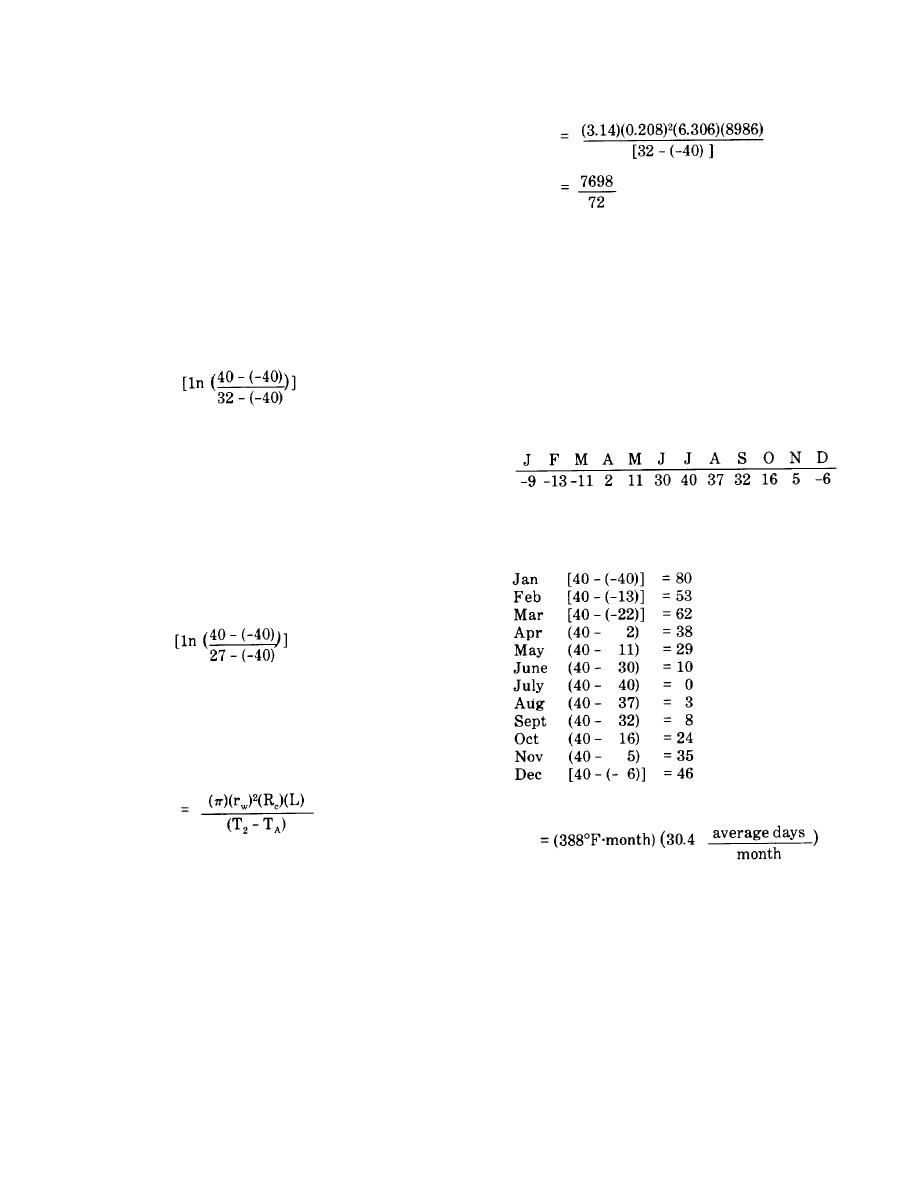
TM 5-852-5/AFR 88-19, Volume 5
g. Determine the design time, the safety factor
time and the complete freezing time for the pipe
designed in paragraph 12-9d if the water stopped
flowing. From paragraph 12-9d, assume a 5-inch ID
plastic pipe with 2-inch polyurethane insulation,
constructed above ground. Water temperature tw =
40EF, air temperature TA = -40EF, and wind speed
15 mph. Use equations from figure 12-4.
= 107 hours.
--Design time = time for water in pipe to drop to
freezing temperature (32EF); see figure 12-4 for
h. Estimate the total annual heat loss from the
definition of terms.
above-surface pipe design described in paragraphs
12-9d and e if it were located at Barrow, Alaska.
t0 = Br2wRC1n [(T1 - TA)(T2 - TA)]
The maximum rate of heat loss (Q) was calculated
in paragraph 12-9e for extreme winter conditions.
Design time = (3.14)(0.208)2(6.306)(62.4)
Extrapolation of that rate to an annual value would
seriously overestimate the total heat losses. An
estimate is possible by determining the annual
heating index (equation 12-1). Mean monthly
temperatures (EF) for Barrow, Alaska, are:
= (53.5)(0.105)
= 5.6 hr
--Safety factor time = time for water in pipe to
--The temperature of water in pipe Tw = +40EF
reach nucleation temperature for ice formation.
Assume 27EF.
--Tabulate heating index by months:
Substitute 27EF for T2 in previous equation:
Safety factor time = (3.14)(0.208)2(6.306)(62.4)
= (53. 5)(0.177)
= 9.5 hr.
-- Complete freezing time = time for water at
32EF in pipe to freeze completely solid.
--Heating index = 388EFmonth
L = volumetric latent heat of water
(24 hr/day)
3
= (144 BTU/lb)(62.4 lb/ft )
= 283,0850Fhr
3
= 8986 BTU/ft .
Rc = 6.306 hrftEF/BTU (see example 12-
Other factors are as defined above.
9d)
--Complete freezing time
--Annual heat loss = heating index/Rc
= 44,891 BTU/yrlinear foot
of pipe.
This is considerably less than extrapolation of the
12-21



 Previous Page
Previous Page
